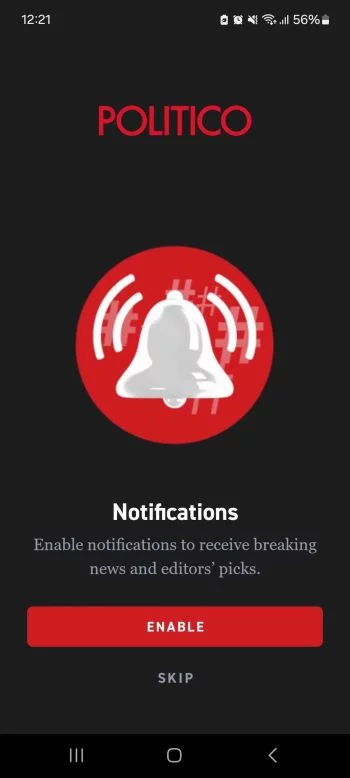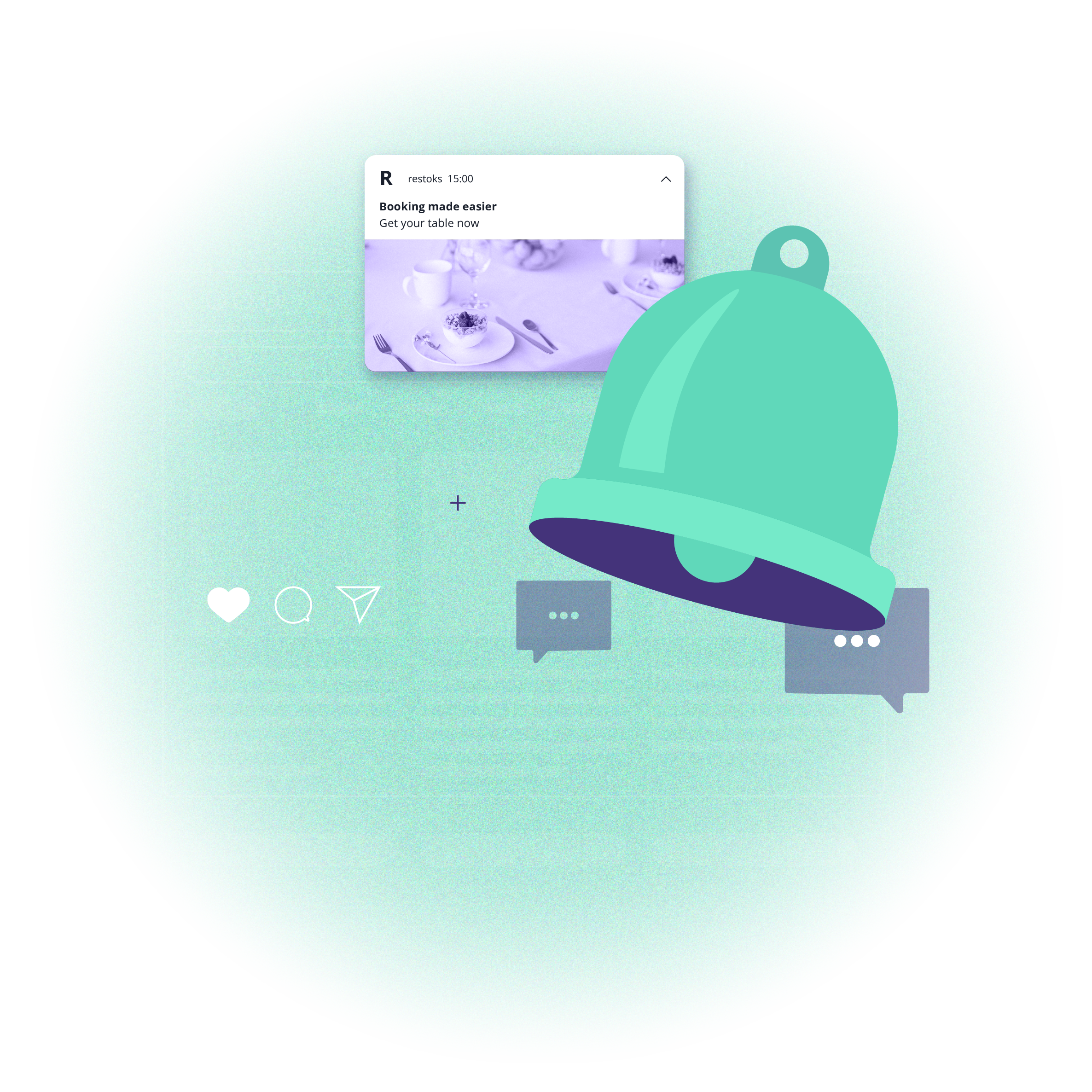Modern newsrooms need modern tools - see how to grow your outreach
 Aleksandra Kozioł
Aleksandra Kozioł © by Afif Ramdhasuma from Pexels
© by Afif Ramdhasuma from PexelsWith continuous shifts in audience preferences, the rise of AI-generated content online and audience fatigue, newsrooms need all the help they can get to help them share reliable, accurate news. As physical copies of newspapers are all but obsolete, online publishing faces new challenges.
Luckily, there are tools and strategies that can help journalists, editors and publishers optimize their work and thrive. For example, onsite and push notifications can serve the same purpose as front pages of newspapers. Short, precise headlines bring audience straight to the source - free of third-party cookies and social media algorithms.
What makes a modern newsroom?
Digital publishing landscape changes. What at a first glance seemed like a revolution - especially after the introduction of AI tools - is actually a continuous process. Contemporary newsrooms are now able to use multiple tools aiming to facilitate the jobs of journalists and media workers.
At the same time media landscape changes as well. The days of everyone using the same few media outlets delivered daily in the form of a newspaper are gone. Now, as readers, we have a 24/7 access to multiple news sources from official channels of well-established news pundits to self-proclaimed journalists writing directly on social media. Quite surprisingly, this embarrassment of riches leads to unexpected side effects, like news fatigue and proliferation of fake news.
Still, let's look at the positives - and a way forward. According to Reuters' Institute research, in 2025 newsrooms and digital publishers focus on developing and strengthening media formats alternative to plain writing.

Audio and video formats have been growing in popularity for the last couple of years. What's more, the stories in video format (usually shared via YouTube) are more often prepared in a vertical format. This comes from the need to adjust the format to smartphone users and their habits.
Still, no matter how great the coverage of current events and evergreen, timeless stories of the past, the channels of reaching the audience also shift. In the same report by Reuters Institute, the authors share the social media channels that publishers wish to concentrate on in 2025.

WhatsApp, the most popular messaging application globally, is moving forward with Channels. It's a simple, convenient way to get in touch with audience members. This may be a new avenue for publishers to replace social media posts or Google regulations. Users can sign in to receive updates on their mobile devices and computers.
The investment in AI-generated traffic bears fruit - according to the article on Digiday, the ChatGPT referral traffic nearly doubled in 2025. On the other end of the spectrum, we have X (former Twitter) suffering heavy losses. The reasons are quite obvious to anyone following American politics - Elon Musk's engagement in the West Wing brought a lot of disturbances in the businesses he runs.
And since we're on the subject of artificial intelligence, let's talk about generative AI. The 2023 survey, conducted for another Reuters Institute report, "Changing Newsrooms 2023," asked respondents how they thought generative AI (like ChatGPT, Grok, or Google Gemini) would transform newsrooms and their role in delivering news. In a surprising display of optimism, the majority of respondents focus on improving workflows and enhancing efficiency. 74% replied that the essence of journalism won't change and new technologies won't have any impact on journalists and journalistic integrity. The writing will still be a human-centred activity.

Adjusting to the interests of the modern audience
The news broadcast can't be one-sided. It's not just absorbing the words of a presenter of cable news. With news sites, discussion forums, social media proliferation and 24/7 news cycle, it's much more like a conversation. And the question newsrooms and publishers need to ask is: how to keep it going? How to make sure your audience is still there to meet you?
As surveys show, more and more people are actively avoiding the news or limiting their exposure to usually grim news. According to the Reuters Institute, nearly 39% of respondents admitted to doing so, citing the negativity and anxiety triggered by global events. This trend is understandable—breaking news alerts usually concern natural disasters, armed conflicts, or political upheavals.
News avoidance is rising in every age group - with the significant emphasis on younger demographics actively distrusting news stories, both from popular news anchors and social media self-proclaimed experts. There's nothing inherently wrong with taking a step back and limiting the amount of time spent doom scrolling or following news. That's as long as the hour you want to spend actually consuming news from the world, you come to the reliable sources.

One of the strategies to tackle the problem is adjusting the content to the new times. Since the stories shown in the media are usually negative, some media channels are actively seeking some more optimistic stories to balance things out, with the BBC making it a dedicated section on their website. They share uplifting content from across the UK and the world, proving there's still some good in the world and humanity.
Another category of content to fit the audience's needs and expectations are long-form explainers to break down the complex nature of current events. Take The Guardian's "Explainers" section, which breaks down complex issues and shows the real impact they can have on the everyday life of the potential audience member. An in-depth analysis of seemingly unimportant issues or ideas can have a significant impact and help broaden the horizons.
How can a newsroom reach its audience
As traditional social media strategies dwindle and news avoidance is on the rise, newsrooms and digital publishers seek for new ways to attract their recipients. News organizations push for more help from the government, especially in relation to media giants, like Google or Meta, which tend to dictate their own rules and punish those who don't comply. But as the battle for the future of social media rages on, there are other avenues to explore.
Building a user base
The best way of combating the social media algorithms is to build your own base of readers, watchers and/or listeners. Since paid subscriptions remain the most reliable source of income for digital publishers.

For both paying subscribers and audiences reading articles in free access, staying in touch is crucial. That's why many newsrooms decided to move forward with mobile formats and applications to make their content available on smartphones. But as the competition grows, mobile push notifications emerge as one of the crucial touch points to promote new stories, relate breaking news and give updates as the story develops. They're also much easier to follow than social media posts.
With mobile push, the subscription prompt is usually displayed as soon as the app is downloaded and opened for the first time.

Web push works in the similar way - although on a different platform. In short, web push notifications are sent by a website, instead of mobile app, and are available on both mobile devices and desktops. All that's required is a browser (opened or active in the background).
What's also important is that neither web nor mobile push require the user to share any private information (name, email address and so on). However, there's a possibility of adjusting the topics of the notifications to own interests. Users can also opt in to share their location, guaranteeing more relevant news.
Onsite notifications don't require a sign-in at all. Those non-intrusive messages appear on the website and can be used to promote additional stories connected with pages browsed by the user or videos watched on the news platform. Without taking much space, they can redirect users to pages they might be interested in.
The channels mentioned above can be used in combination with social media posts and videos, with newsletters and e-mails, and even paper newspaper editions if a publisher decides to keep the print alive. Creating a balanced mix of available multichannel options can further the newsroom's goals and help the news gain traction ahead of their competition.
Communication strategy for every newsroom
Both push and onsite notifications share a simple form: there's a title, a content field, optional large image and action buttons leading users to specific pages or action on the site. That's not where the similarities end, of course. Notifications can be used for example to:
send mass campaigns concerning urgent news and last-minute updates on developing stories
prepare targeted campaigns sent to a targeted group of recipients
in the case of push notifications, data is gathered across multiple sessions via first-party cookies and used in automation scenarios. The expanded opt-in form with the possibility of choosing specific topics is also taken into accord.
with onsite notifications, personalization is only available with the data from one specific session. No additional information is stored
geolocation can also be implemented in push notifications, allowing teams to send updates regarding news in a specific city or location where the subscriber logs in.

In addition to mass and targeted campaigns for sharing stories, web and mobile push notifications can also be used to send automated communication. This can be utilized to:
remind users about abandoned subscription forms to encourage sign-ins
build transactional communication regarding their subscriptions or their interests
prepare recommendations based on stories read or video watched in the past
send alerts about content by specific authors that subscribers watched or read in the past
There are countless possibilities to leverage the push notifications to what every new team needs.
PushPushGo's tools to facilitate newsroom operations
With everything that has been said about the real strength of journalism - the focus on the stories and the truth - newsrooms need tools to facilitate their work. With PushPushGo they can organize and prepare all their notifications campaign in one tool, plan them, and track their results.
But there's more. after years of cooperation with our clients in the publishing industry, we prepared a set of tools aimed at facilitating everyday activities in busy newsrooms.
Rocket Push. Create a web push campaign without opening PushPushGo application, just by using Chrome extension in your browser. This function allows you to prepare a push notification based on metadata from the article you wish to promote. After pasting the URL, the title, content, and image will be filled out. If in doubt, just double-check and send.
Multi Push facilitates the work across multiple projects (i.e., managing local subsections of a vertical news portal). Multi Push allows you to send a mass push campaign across all projects, instead of manually creating new versions for every project.
Priority is a helpful function that helps you reach out with the most important updates or stories. Campaign marked with priority will be delivered first, on top of any other targeted or automated campaign you might have scheduled.
The best of the past and the present
All the best tools in the world won't help if they're not used in a good way with common sense and care. And you can't work without a plan based on a well-documented research. This works for both the audience looking for their news, and newsrooms trying to reach them.
PushPushGo allows teams to access analytics to help them better understand audiences and their interests.In the analytics panel, you gain access to information about:
overall numbers of sent, delivered and clicked notifications
the CTR and DSP metrics
the most popular topics and pages visited
location of subscribers
Combined with the data from Google Analytics and other sources available, the notifications' data can help you shape the best communication strategy for your team.
And if you're looking for an industry-wide overview, take a look at our report summarizing web and mobile push performance in 2024. You'll find out:
what's the best hour, month and day of the week to send push notifications
how does the audience break down in terms of devices used (mobile versus computers)
how targeting can help reach users based on their expressed interests
does the season affect the way subscribers interact with push notifications
In the opening scene of the popular HBO series "Newsroom", we can see how the news of the past used to work - people jumping at each-others throats while the audience is watching and Jeff Daniels is slowly losing his mind trying to keep his unbiased facade. Then he gives his speech underlining his character's view on journalism and journalistic integrity (and the position of the USA in the global politics). The scene was shot in 2012, which seems like a past long gone, but rings true even over a decade later. As Will McAvoy states: "The first step to solving any problem is recognizing there is one". So if you see tere's something wrong in reaching your audiences, contact us for a conversation, an audit and tailored solutions for your newsroom.

Content Specialist @PushPushGo
Editor and writer. She is interested in media and new technologies.
Try PushPushGo to engage and connect with your audience.
Create an account and start testing!





